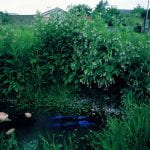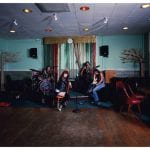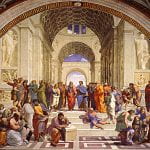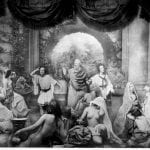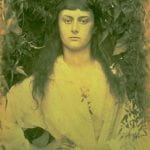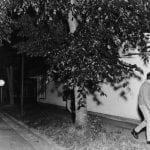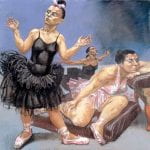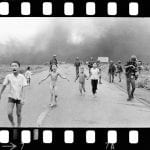Knowing Narratives: Into a Sea of Stories
Intertextuality: The accumulation and generation of meaning across texts, where all meanings depend on other meanings. The self conscious citation of one text within another as an expression of enlarged cultural self consciousness’ (Barker, 2008, p.482)

In this session, participants will explore themes of intertextuality and originality in thier images by constructing images in direct response to another (visual / written) ‘text’. They will consider the levels of ambiguity (or not) of such images and thay are encouraged to undertake in-depth independent research into Tom Hunter’s practice and its positioning within wider ideas regarding the nature of photographic representation and narrative within the constructed image.
‘Practitioners of staged photography invent their motifs, freely combining the real and the invented, photography and painting, photography and stage design, weaving historical and mythological references into their works, and do not hestiate for a moment to manipulate reality’ (Kohler, 1995, p.8)

This Session could be run in conjunction with:
- Tell Me a Story – post to come
- Places with a Past
- Acting the Part
- So Many Books, So Little Time

‘A text is… a multidimensional space in which a variety of writings, none of them original, blend and clash. The text is a tissue of quotations’ (Barthes 1977, p.146)
Aims & Outcomes:
- For participants to visually explore the loading of narrative into the single image
- For participants to understand the difference between literal and ambigous imagery (and thier consequences)
- For participants to respond photographically to recast / recreate another ‘text’
- For participants to investigate the relationship between ‘texts’ and consider the notion of originality
- Participant Take Away Outcome: 1 exhibition quality 10 x 8 print
‘Movies can shape a layer of memory, leading us into a shared past, sometimes false, dreamlike childlike, but a past we’ve all agreed to inhabit’ (Don De Lillo in Lewis, 2014)
You will need:
- A selection of paintings, fairy stories, photographs, films, nursery rhymes, music video’s etc (a mix of visual and written ‘texts’)
- Digital cameras for all participants (and appropriate memory cards) *This session can also be run using Camera phones or Lumix cameras
- Card readers
- Access to computers (or laptops)
- Flashguns (or a Studio) to practice lighting techniques
- An introductory brief & Presentation (below) for participants to outline the ideas and provide examples
- A booked room to critique participants work (either via a projector or via print)
- Blue tack to pin the work
- Costings and Risk Assessments
Research: the work of tom Hunter
Preparation Work:
- Ask participants to read Helen Simpson (2007) ‘Femme fatale: Angela Carter’s The Bloody Chamber’ in The Guardian, 24th June 2006 available here
- Ask participants to read / watch interview with Richard Tuschman on Hopper Meditations available via Lens Culture (2013) here
- Ask participants if they have thier own digital cameras and cards
- Make sure you have access to computers / image editing software
- Make sure there are enough team members to support participants (never assume thier prior knowledge)
- Decide whether you will project the work or print it.
- If you are printing it make sure the Photo Lab are aware and be aware of timekeeping so they have space to print the work.
- *If you are running this session off campus, make sure there is access to printers or projectors

Presentation Ideas: into a sea of stories
Suggested Session Outline:
- Show participants the trailer for Shrek the Third (2007) (above). Ask them to count and write down every intertextual reference they can see in the clip. Does it matter if we don’t recognise all of them? How does it recast its reference points into a new narrative?
- Give the Presentation (above). Invite participants to compare the intertextual work with its ‘original’ text. What are the similarities and differences? Is it a straight ‘copy’ or something new and original? How does the new work change or play with this ot create new meanings and narratives? Is it merely a literal / descriptive ‘copy / illustration’ or a more ambiguous image. Do we need to recognise the original source ‘text’?
- Provide participants with a list of visual / written ‘texts’ (or they can think of thier own). Identify the key elements of the ‘text’: narrative, people, objects, places and motifs etc.
- Identify how these might be translated in new ways (e.g. a ‘cauldron’ could become a microwave / a ‘princess in distress’ might be female / a ‘forest’ might be a playground / park or garden. How might the ‘text’ be translated in more ambigous ways? (e.g. the absence of people / the ‘feeling’ of the original text / a modern update)
- Sketch out / brainstorm initial ideas (thinking of props, locations, characters etc)
- Location lighting or studio induction. How does light colour / black and white / aesthetics influence the scene?
- Shoot the image individually / in groups
- Print / Project and critique the images with the original ‘text’ in mind / on view and considering aspects of originality / description v’s ambiguiy / the construction narrative within the single image / audience respsonse





